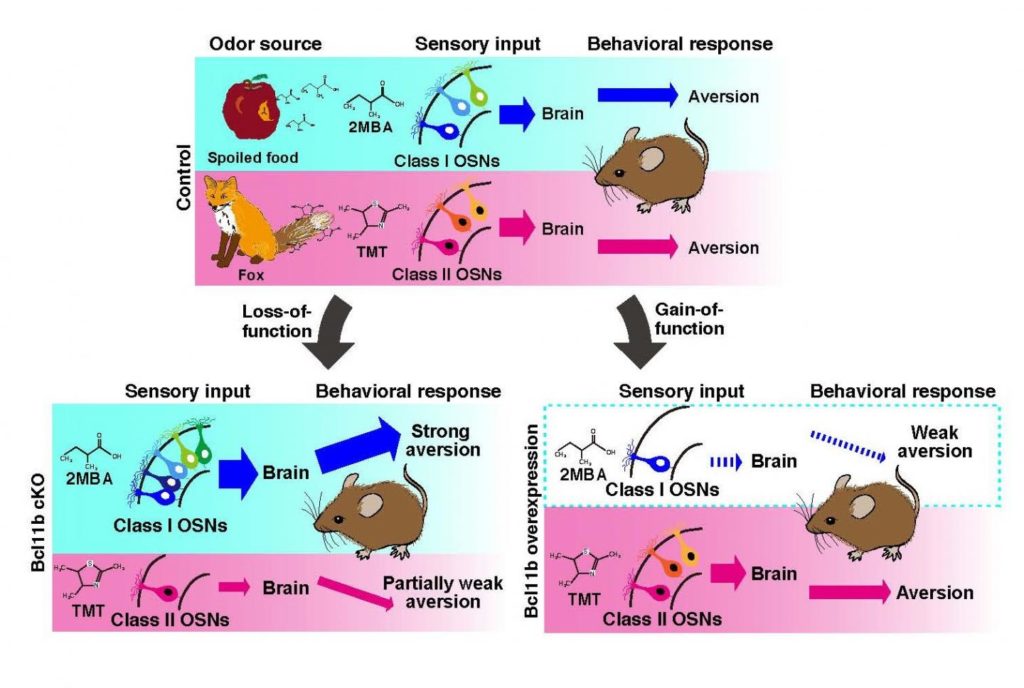Have you ever wondered how marine animals smell the world, and how the olfactory system evolved from aquatic to terrestrial animals? There are two different classes of odorant receptor (OR) genes that can be expressed in olfactory sensory neurons: “class I” first identified in fish and frogs and then found to be common to all vertebrates, and “class II”, which is specific to terrestrial animals. How does the olfactory sensory neuron know which class of OR to express?
“Decision between two classes of ORs is critical to both the anatomical and functional organization of olfactory system.” explains Prof. Junji Hirota from the Tokyo Institute of Technology, “However, while we have known that two classes of ORs exist for more than 20 years, the mechanisms that regulate the OR class choice have remained an open question.” To understand the OR selection process, he and a group of investigators set out to unveil the factors that make the decision between two classes of ORs.
The researchers discovered for the first time that Bcl11b, a transcription factor, determines which class of OR gene is expressed in olfactory neurons. In the absence of Bcl11b, olfactory neurons are fated to class I. But the fate can be switched to class II in the presence of Bcl11b. This also corroborates the idea that class I OR is the default OR, which undergoes a transcriptional switch in the presence of Bcl11b.
A similar mechanism takes place in frogs. In tadpoles, olfactory neurons express class I ORs in the so called “water-nose” until they undergo metamorphosis, when a part of their olfactory epithelium starts expressing Bcl11b, and thus start expressing class II ORs, which becomes “air-nose” in adult frogs.
Further, the scientists demonstrated that genetically manipulating Bcl11b expression in mice not only altered the class of OR gene, but it also changed the corresponding neural wiring, altering odor perception in the animals.
By manipulating the expression of this gene in mice, the researchers generated mice with “class I-dominant” and “class II-dominant” noses. Interestingly, because these two different OR classes are linked to the entire odor perception mechanism of the animal, the mutant mice perceived aversive odors differently, i.e., “class I-dominant” mice become hyper-sensitive to decayed food odor but less sensitive to predator’s odor.
“Our findings unveil a long-standing mystery in OR gene regulation, a molecular mechanism of the OR class choice as well as an essential role of Bcl11b for the functional organization of olfactory system by integrating genetic, cellular, and behavioral analyses, and provide important insights on the terrestrial adaption of olfaction during evolution,” concludes Prof. Hirota.
###
This part of information is sourced from https://www.eurekalert.org/pub_releases/2019-08/tiot-grb081619.php
Kazuhide Hasegawa
81-357-342-975
[email protected]
http://www.titech.ac.jp/english/index.html


